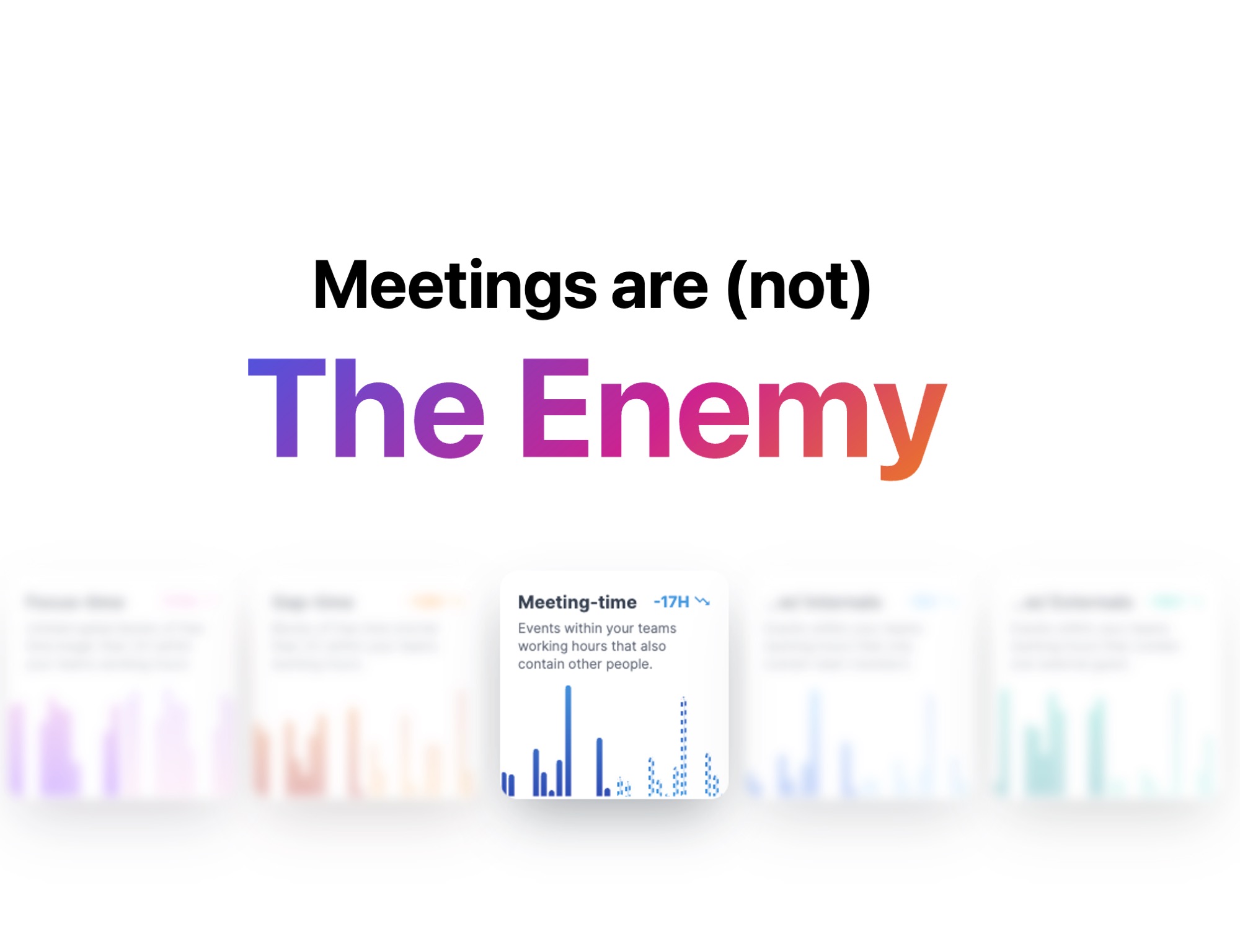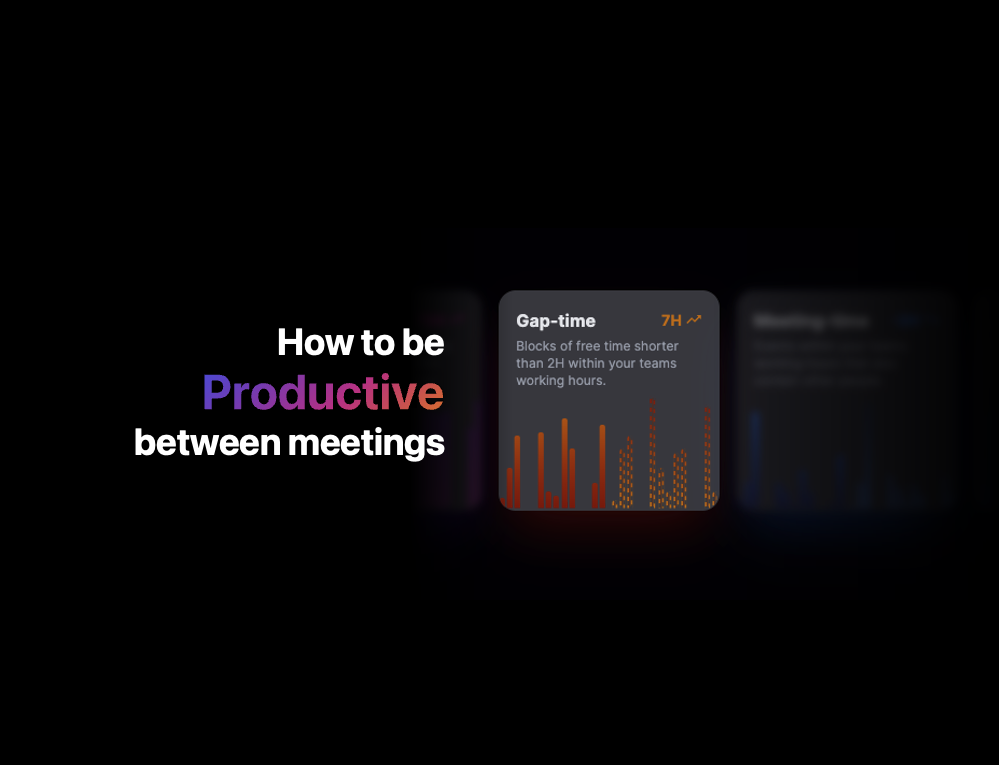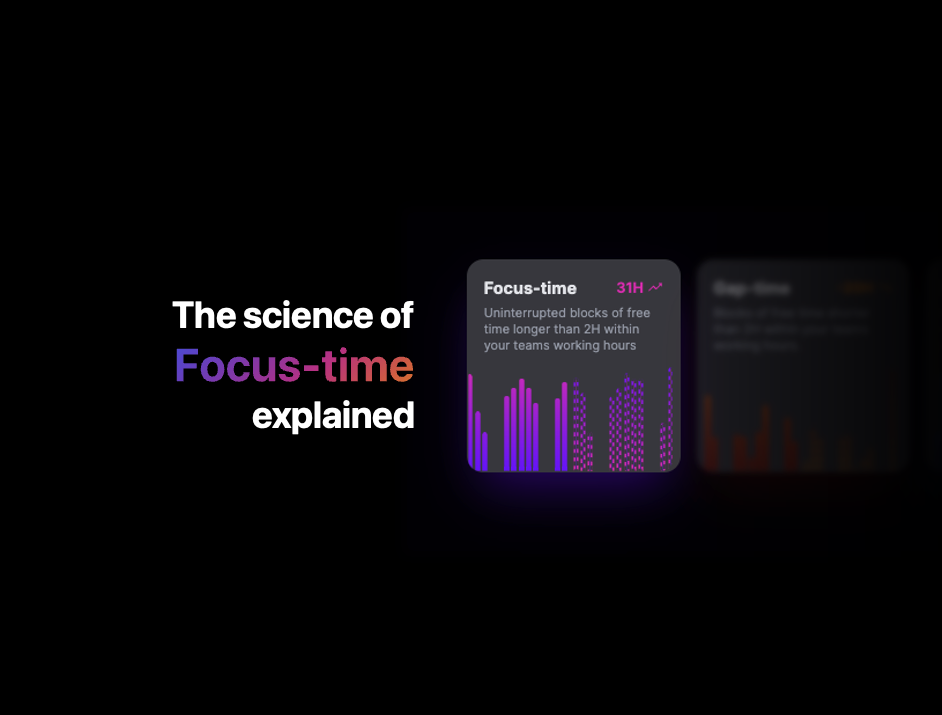The ultimate guide to one-on-one meetings [including templates + checklists]
15 min read
One-on-one meetings with your employees are one of the most important things you can do as a manager. Why? There are many reasons. They build rapport with your team, they keep your employees focused and productive, they encourage ongoing feedback…the list goes on and on.
But just because one-on-one meetings are important doesn’t mean they’re easy. This crucial time with your employees can require some work to get going – but it’s well worth it.
Our guide will give you everything you need to start having one-on-ones with your team: the logistics, the questions to ask, the expert tips you need to know, and much more.
- The purpose of one-on-one meetings
- One-on-one meeting basics
- One-on-one questions to ask employees
- Employee one-on-one meeting template
- One-on-one tools to use
- How to give (and get!) feedback in your one-on-ones
- Tips for effective one-on-one meetings
- Signs of a successful one-on-one
- [Infographic] how top managers do one-on-one meetings
The purpose of one-on-one meetings
We talk to a lot of managers about their one-on-one game (after all, it’s what our free agenda tool is all about!). We always ask, “why do you do one-on-ones with your team?” and the two most popular answers are:
- To provide feedback
- To build rapport with the team
“I do one-on-ones to connect with my team – to understand what challenges they are facing, as well as challenge them directly to help them level up,” says Zapier’s Infrastructure Engineering Lead, James Carr. “It’s also a great time for them to also share feedback with me on how I am performing as a leader, and helps me keep a regular pulse on all the work happening.”
As a part of that rapport-building and feedback, another purpose of one-on-one meetings is to catch red flags before they become major roadblocks – or worse, employee turnover.
“I want my direct reports to really understand that my job is to help them be successful and to meet their own goals and dreams,” explains Kara McNair, former Engineering Manager at Buffer. “By spending time learning about what matters to them and showing them that I really care about that, they trust me enough to tell me when things aren’t going well for them and giving me the chance to help them.”
One-on-one meetings can mean different things to different people. Your goals for having one-on-ones might be different than your fellow managers. You might even find that even within your team, your one-on-ones differ wildly from one employee to the next. But at the very core, these conversations are about building relationships and encouraging feedback.
One-on-one meeting basics
Again, one-on-ones can mean many things to many different teams. Even the name differs from company to company (1:1s, one-on-ones, one-to-ones, 121s, weekly check-ins…the list goes on and on!). But here are the basic logistics that we recommend starting with:
- 📅 How often? Weekly
- ⏰ How long? 30 minutes
- 👥 With who? All your direct reports (and, ideally your manager too!)
- 🗺 Where? Somewhere quiet and private (this can change from week to week)
Here are a few more FAQs we often hear when managers are starting one-on-ones with their team:
How do I explain one-on-ones to my team?
Great question. Start by explaining exactly what one-on-ones are (Radical Candor has a great definition), and then go into specifics about why you want to start doing them now. Then get their input on the logistics. Explain some of the basics we’ve listed above, and see if they have any opinions on alternatives. (They might be really keen to meet every other week, for example, or they might want to do an hour each week rather than 30 minutes.) Remember that these meetings are their time to really connect with you (more on that later!) so they should get to weigh in on the logistics.
Here’s an email template can help you introduce one-on-ones to your team. This is based on what our founder, Brennan McEachran, sends to new hires at Hypercontext that are unfamiliar with one-on-one meetings.
Hi [Name],
I’m going to add a recurring event on our calendar for a 1:1. But I wanted to share a little extra info before you get the invite:
- One-on-ones at [YOUR COMPANY] are recurring meeting every week. It might seem like a lot, but we’ll batch a lot of discussions into that time, and this will likely cut down on the amount of interruptions that occur throughout your day.
- Think of this as your meeting. It’s dedicated time for you, with me. We can (and should!) talk about anything you want. The value you’ll get out of our one-on-ones depends on you: Drive it, grab the reins.
- Let’s not use this time to talk status. I can check other places for that. Let’s talk strategy, process change, confusion, etc. Let’s make sure at least one a month we chat about human things like career development, personal growth, etc.
- The more time you can give me to prepare, the faster we’ll go. If you share the agenda in advance I’ll come prepared. If you’ve got nothing on your agenda, I’ll fill it up – I have lots of things I’d like to chat about. But let’s make that a last resort.
We’ll talk more in-depth about expectations and logistics at our first meeting. I’m really looking forward to this time together.
Who owns the meeting – me or my employee?
Best practices dictate that this is your employee’s meeting – because it’s their time. However, many managers share the responsibility of adding items to the agenda, or at least having items ready to go if the conversation lags. But over time, you’ll really want to encourage (or even train!) your employee to take ownership over your time together and dictate what they want to talk about.
How should I prepare for one-on-ones?
Before the first meeting, work on your active listening skills. Think about your body language and other cues to show that you’re listening and engaged in the conversation. Go through the agenda ahead of time and think about any additional questions you’d like to ask, or talking points you want to hit on. Remember: this is their meeting to drive, so you might not get to everything. But it’s good to have notes ready to go.
If you’re using a shared online agenda in Hypercontext, you can use the “private notes” section to keep any talking points, questions or reminders on-hand, but hidden.
After your first one-on-one is done, prepare for each one-on-one by reviewing your meeting notes from the previous week, and making sure you’ve addressed any next steps that were assigned to you. If there are any specific issues to address, come prepared with supporting info or notes to help guide the conversation. Also: one-on-ones are a great time to show recognition. If you’ve received great feedback from another department or one of their teammates over the past week, bring that into your one-on-one! They’ll appreciate hearing the kind words, and it will help to put them at ease.
What should I bring?
Ideally, nothing. One of you should have a smartphone or laptop to pull up the agenda and take notes, but other than that, make it a device-free zone. We also recommend avoiding eating (unless you’ve agreed upon a working lunch) because it can be distracting. If you’re running a remote one-on-one, you’ll still push aside all distractions. Your employee will definitely know if you look off-screen to respond to a text.
What should we talk about?
Oooh, we love that question. Read on to the next section for all the details on one-on-one questions to ask employees. But for your first one-on-one, we recommend a few additional agenda items to make it as successful as possible:
- Expectations for our one-one-one meetings moving forward
- What will make these one-on-ones really valuable for you?
- Meeting etiquette – what rules do we both commit to following?
One-on-one questions to ask employees
This is one of our favorite topics. There’s no shortage of questions you can try asking in your one-on-ones to ensure that you’re building rapport and encouraging feedback. Our basic employee one-on-one meeting template is a great place to start. Here’s what we suggest including:
- What has been the highlight and lowlight of your past week?
- Goals – how are you tracking this past week? Any blockers I can help remove?
- What, if anything, feels harder than it should be in your day to day work?
- If there was one thing I could do differently to help you more, what would it be?
- On a scale of 1-10, how happy are you with your work-life balance? How can we get closer to 10?
Check out these 9 one-on-one meeting templates to inspire the best agenda for you and your team!
Here’s how these agenda items look in Hypercontext!
(Psst…do you have remote one-on-one meetings? We have a remote one-on-one agenda template just for you!)
Once you’ve settled into this basic agenda, you can add more questions to keep the conversation flowing. One way to add more agenda items is to use Hypercontext’s question suggester bot: it recommends agenda items to add to make the conversation as meaningful as possible!
Our list of one-on-one questions to ask employees also has tons of questions to add to your agenda to cover a wide range of topics. Here’s a taste:
- If you were CEO, what’s the first thing you’d change?
- What’s a problem we have on our team that I might not know about?
- What does an ideal, productive work day look like to you? Walk me through it.
- What skills would you like to develop right now?
- Who from other teams deserves a shoutout for their help and why?
- What’s something you’d like to share but is a little stressful to bring up in person?
- What do you like about my management style? What do you dislike?
- Is your job what you expected when you accepted it? If not, where has it differed?
One-on-one tools to use
Effective one-on-one meetings are only as good as the tech that supports them. This is especially true when it comes to remote meetings – but it goes for face-to-face meetings too. Using no technology at all – gasp! – and sticking to a simple pen and paper can lead to problems following up or being able to easily search back previous conversations, which can mean added strain on your relationship with your employee. But also using the wrong technology – like, say, copy-and-pasting each week’s agenda into a new Google Doc – can mean tons of wasted time and energy, week after week.
The three tools we recommend are:
- 📅 A calendar tool: Unscheduled meetings fall through the cracks! Formally scheduling your one-on-one meetings with a calendar tool like Google Cal or Outlook will help to ensure that you’re having them on a regular, ongoing basis.
- 💻 A one-on-one agenda tool: Using a shared online agenda means you can both add items ahead of time – and prepare accordingly. It also means next steps and notes are in a central location (and we recommend Hypercontext, of course!)
- 🎥 A video chat tool: Even if you don’t manage remote employees, it’s a good idea to have a video tool like Zoom at the ready for the days where one of you is WFH or working remotely for any other reason.
How to give (and get!) feedback in your one-on-ones
We’ve already talked about how giving (and getting!) ongoing feedback is one of the most important reasons why managers do one-on-ones – but it’s worth repeating. In a recent post, we talked about how employees hate it when the only feedback they get is during performance review season:
“As an employee, reporting to a manager that you don’t have the best relationship with can be very stressful – but that’s especially so during review time. Far too often, I’ve seen a co-worker come out of a quarterly, mid-year or annual review meeting looking like they just saw a ghost as they utter to me ‘I thought everything was going well!’”
Giving feedback
So, ongoing feedback is key. But how do you do it? When you’re offering feedback to an employee, preparation is key. Use our checklist to ensure you’re going into your one-on-one primed to give meaningful feedback:
- Get the facts: Pull up any key metrics/dates/incidents related to your conversation.
- Step into their shoes. Try to see the situation from their point of view.
- Remove emotions. Spend some time with those feelings, and then push them aside.
- Think about possible solutions. What are you hoping to achieve with this feedback?
- Create an objective statement. Distill what seems to be happening, how it’s impacting the team and what you’d like to achieve.
During the conversation, be clear and concise with your feedback, and be sure to engage in active listening throughout. Give them plenty of time to respond and react to your comments – the whole point of this feedback should be to help them to thrive as an employee, so be sure to keep that focus throughout the conversation.
Getting feedback
An integral part of one-on-one meetings is also encouraging your employees to offer you feedback. After all, you need to set an example for how to hear and respond to feedback, so that you teach your employees to do the same. Our founder Brennan McEachran, recommends the mirroring technique:
“Mirroring is a Jedi mind trick. When you hear difficult feedback, your default reaction in your reptile brain is to yell, or fight back or punch them in the face. Obviously don’t do any of that. Instead, you need to consciously move out of conversation mode and into reflecting mode. Just mirror back their words to them. But here’s where the Jedi mind trick comes in. When you mirror back their feedback and ask for confirmation, they’ll say ‘Yes! And…’ and they’ll tell you more things. More stuff they’re pissed about that you didn’t even know about. You’ll go down levels after levels if you just keep doing this. Just keep mirroring and confirming until they’re done. That’s how you really get at what’s on their mind.”
Whether you’re giving or receiving, the most important part of ongoing feedback is that it’s, well, ongoing. Make this a recurring item on your weekly one-on-one agenda and don’t skip over it. It might feel a bit forced at the beginning, but over time your employees will feel more comfortable opening up to you.
Tips for effective one-on-one meetings
🚫 Never cancel. Ever: This is one of the employee pet peeves we hear again and again – when a manager gets busy, their first instinct is to cancel their most “unimportant” meetings: one-on-ones. Not only is this absurd (they are the MOST important meetings!), but it also sends the message that you don’t care about your employee’s well-being, which can do irreparable damage.
⏳ Stick to a schedule: It’s easy to let meetings run long (especially if you have a chatty employee) but constantly going over doesn’t help anyone. Respect the time frame you’ve set out for these meetings. If you constantly go over, consider setting a timer to go off five or 10 minutes before your end time to remind you to start wrapping up.
🗣 Don’t dominate the conversation: You won’t believe what your employees have to say – if you just give them time and room to say it! Remind yourself again and again that this is your employee’s time, and they need to drive the conversation. It will likely go in unexpected directions, which can be awesome.
📝 Avoid status updates: This can be extremely challenging – especially with an introverted employee that clings to status updates as a way of avoiding more personal topics. You don’t want to force them out of their comfort zone, but each meeting try to gently guide them onto other topics. Remind them again and again what the goal of this time together is, and how it can benefit them to move away from status updates. Over time, your persistence will pay off.
👋 Open up: We heard a great tip from Envato Engineering Manager Lindsay Holmwood on getting your employee to open up: you go first. “My actions and behaviors set the boundaries for what you think is acceptable during our 1:1s,” he says. “If I want you to be vulnerable, I have to be vulnerable first.”
👉 For more tips, check out our list of 37 tips for effective one-on-ones.
Signs of a successful one-on-one
Wondering how you’ll be able to tell if your one-on-ones are going well? We asked managers at top companies like Buffer, Zapier, Ritual and more how they know when they’ve had a successful one-on-one. Here are a few highlights:
- “If someone tells me that I helped them get through a challenge, or helped them feel better about something that was bothering them.”
- “We have learned something new about each other.”
- “We mark off a bunch of actions we previously committed too.”
- “We’ve had a difficult conversation and you walk away accepting, and ideally happy.”
- “I think back to it in the next couple of days (sort of like how a good movie will keep coming back to you after you’ve watched it).”
- “Whenever I feel like we have solved a really difficult problem.”
- “When the rapport exists, and as a result I am also receiving constructive feedback.”
For more on our findings from polling top managers, check out our infographic below 👇





